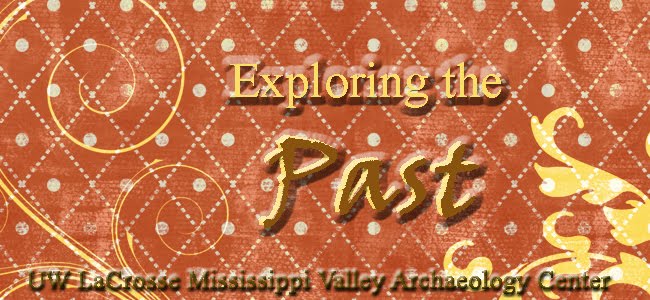Friday, July 23, 2010
Arrows, Atlatl, Knapping
Today we went back to the Cade Farm where our instructors had three stations. At the flint knapping station, Robert Keipers, a professional knapper has been doing this for 40 years. He took a very large granite rock and explained how he would use another rock and pressure to break away sections. Once he had the basic shape, he would use two different sizes of deer horns to chip away at the outer edges to form it. He also used copper to chip away at the flint. As he worked on the flint stone, he would explain his thought process and why he did what he did. Sometimes he would use a magic marker to draw around an area that he wanted to chip off. He travels across the United States meeting other knappers, learning and sharing techniques, and buying stones. These meetings are called knap-ins. We were told that some unscrupulous knappers will sell their flint stones on E-bay as authentic. The way to tell is if a flint stone is too perfect, it is probably a fake. Our next station was learning how to throw an atlatl (spear) and it wasn't as easy as it looked. One teacher teaches javelin and discus throwing so he had a better feel for this sport. After we practiced several times, we given a very long spear to attach to the atl atl and this would make the spear sail farther and more accurately. Our target was a fake bear which most of us missed. Only one teacher came very close.They have atl atl contests and people attend them, just as there are marathons, bike or canoe racing, and other types of sport competitions. We also learned how to use a wooden stake to bore a hole in a stone using sand. At the arrow making station we were first shown an arrow bush on the Cade Farm. The shafts are very straight. The wood is tied in bundles for 3 months, then the bark is shaved off using a flat stone and retied in bundles for six months. Loren Cade invented a sizing stone to help whittle the shaft to a uniformed width. Turkey feathers are burned or seared in a straight line. Sinew from a white tail deer is stripped and made very thin. This is wet and wrapped around the feather and is a form of glue. I asked about turkeys in North America because I had read recently that turkeys originally came from Turkey. Loren said they have found turkey bones from prehistoric times in North America. It could be that when Europeans came to the Americas they named the bird. Where are wild turkeys found in North America and are they in South America too?
Subscribe to:
Post Comments (Atom)


No comments:
Post a Comment